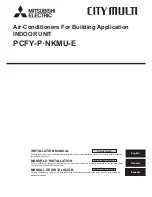
3.
Check the
Regenerate All Keys
box.
4.
Click
Submit
.
The Key Type/Status/Action table will temporarily disappear while the NetClock regen
erates the keys. The Host keys are generated in the background. Creating RSA and DSA
keys, each with 1024 bits length, typically takes about 30 seconds. Keys are created in
the order of RSA, DSA, ECDSA, ED25519. NetClock will generate all 4 host keys, RSA,
DSA, ECDSA, and ED25519.
5.
Delete any of the keys you do not want. See "Deleting Host Keys" on the previous page.
Note:
If the unit is rebooted with host key creation in progress, or the unit
is booted and no host keys exist, the key generation process is restarted.
The key generation process uses the previously specified key sizes.
Note:
If a key size is undefined, the default key bit length size used is
2048. A key with a zero length or blank key size field will not be created.
When you delete a host key and recreate a new one, SSH client sessions will warn you that the
host key has changed for this particular IP address. The user will then either have to:
1.
Override the warning and accept the new Public Host Key and start a new connection.
This is the default. This option allows users to login using either method. Whichever
mode works is allowed for logging in. If the Public Key is not correct or the Passphrase
is not valid the user is then prompted for the login account password.
2.
Remove the old Host Public Key from their client system and accept the new Host Public
Key. This option simply skips public/private key authentication and immediately prompts
the user for password over a secure encrypted session avoiding sending passwords in
the clear.
3.
Load a public key into NetClock. This public key must match the private key found in the
users account and be accessible to the SSH, SCP, or SFTP client program. The user must
then enter the Passphrase after authentication of the keys to provide the second factor for
2-factor authentication.
Please consult your specific SSH client’s software’s documentation.
Public Keys: Viewing, Editing, Loading
The
authorized_keys
file can be viewed and edited, so as to enable adding and delet
ing Public Keys. The user may also retrieve the
authorized_keys
file from the .ssh dir
ectory Using FTP, SCP, or SFTP.
If you want to completely control the public keys used for authentication, a correctly formatted
authorized_ keys
file formatted as indicated in the OpenSSH web site can be loaded
onto NetClock. You can transfer a new public key file using the Web UI.
2.14 Configuring Network Settings
CHAPTER
2
•
NetClock User Reference Guide
Rev.
16
81
Summary of Contents for NetClock 9400 Series
Page 2: ......
Page 4: ...Blank page II NetClock User Reference Guide...
Page 16: ...BLANK PAGE XIV NetClock User Reference Guide TABLE OF CONTENTS...
Page 42: ...BLANK PAGE 1 11 Regulatory Compliance 26 CHAPTER 1 NetClock User Reference Guide Rev 16...
Page 160: ...BLANK PAGE 2 17 Configuring Outputs 144 CHAPTER 2 NetClock User Reference Guide Rev 16...
Page 238: ...BLANK PAGE 3 5 Managing the Oscillator 222 CHAPTER 3 NetClock User Reference Guide Rev 16...
Page 462: ...BLANK PAGE 446 NetClock User Reference Guide...
















































